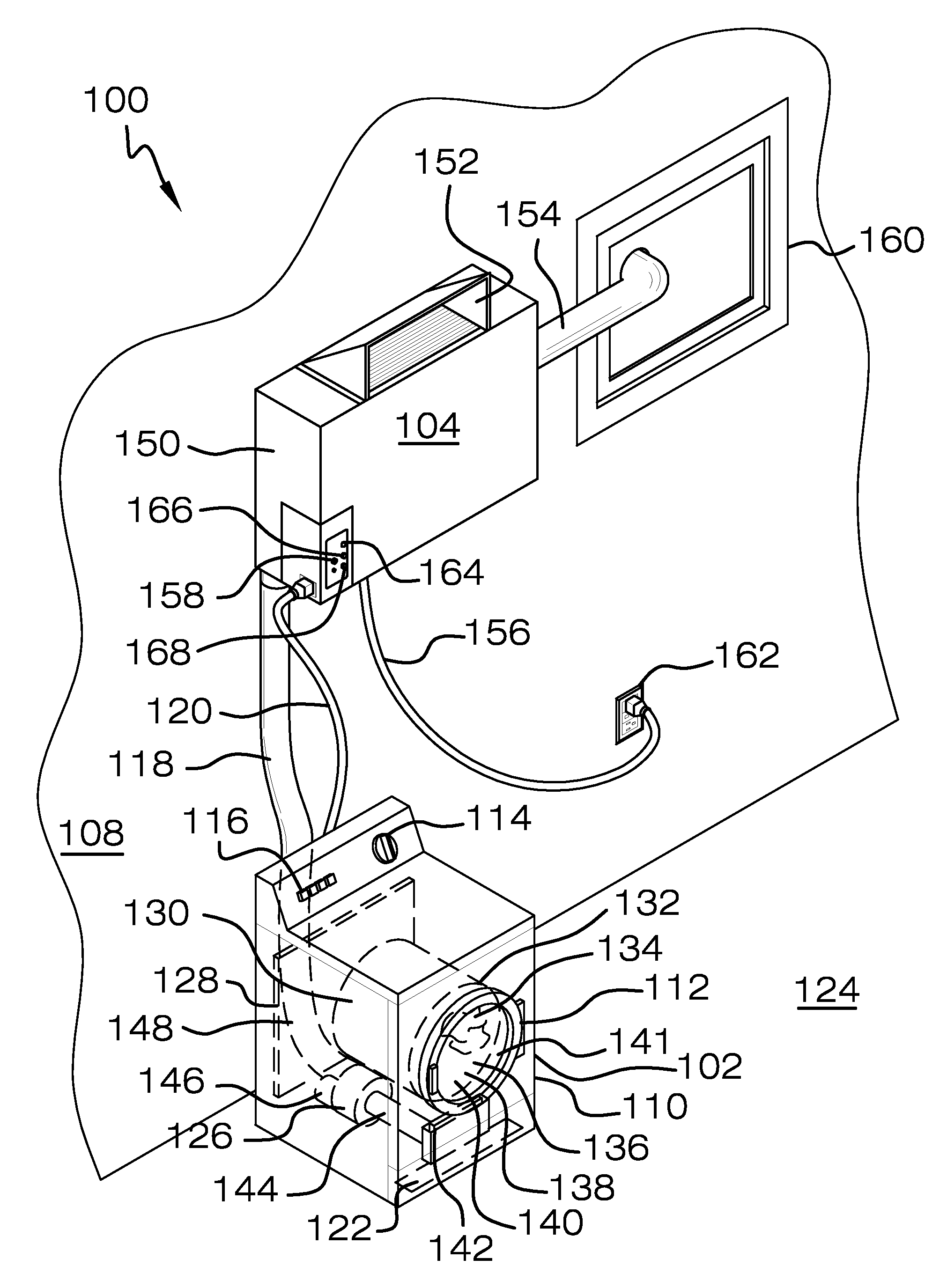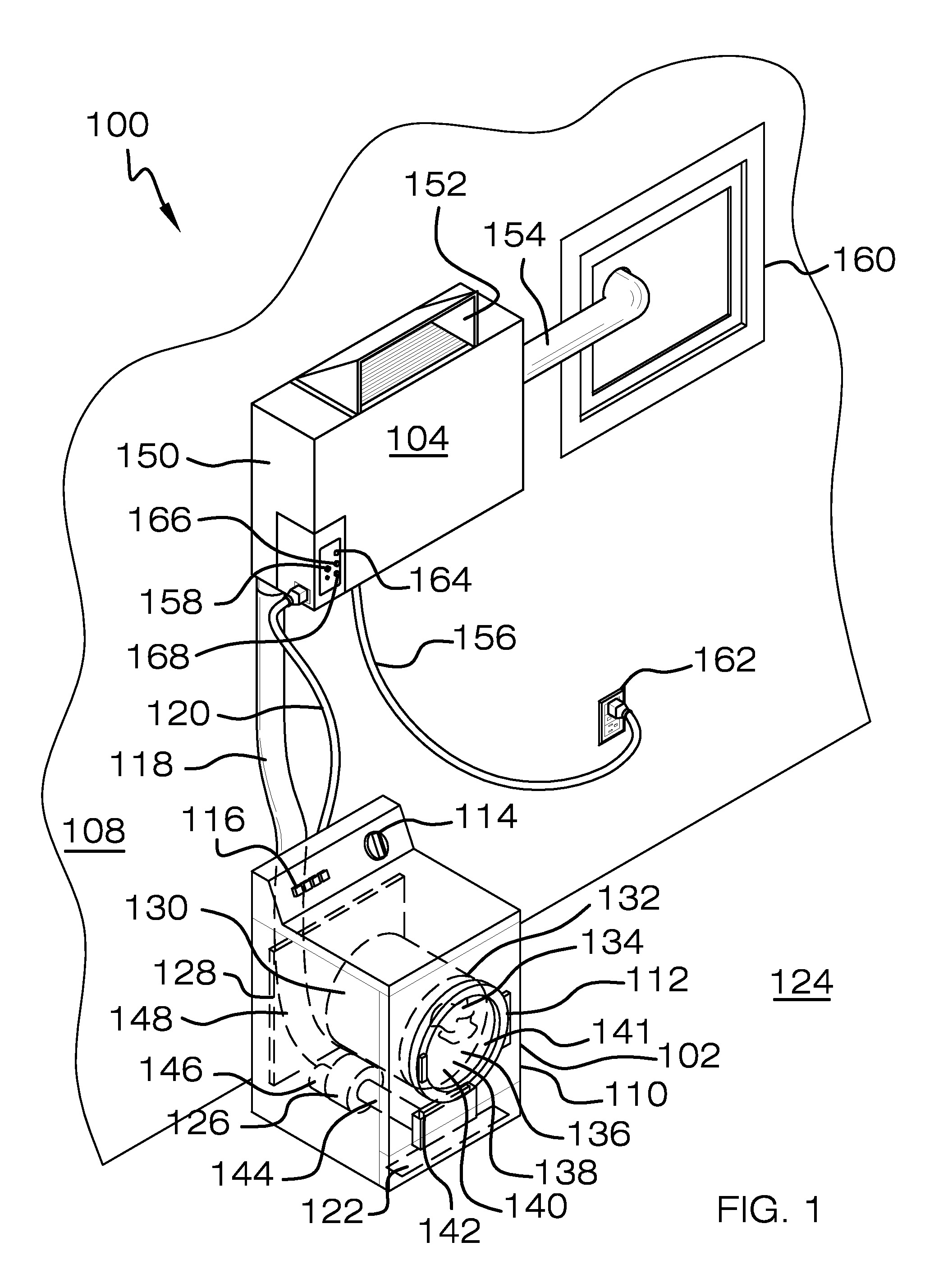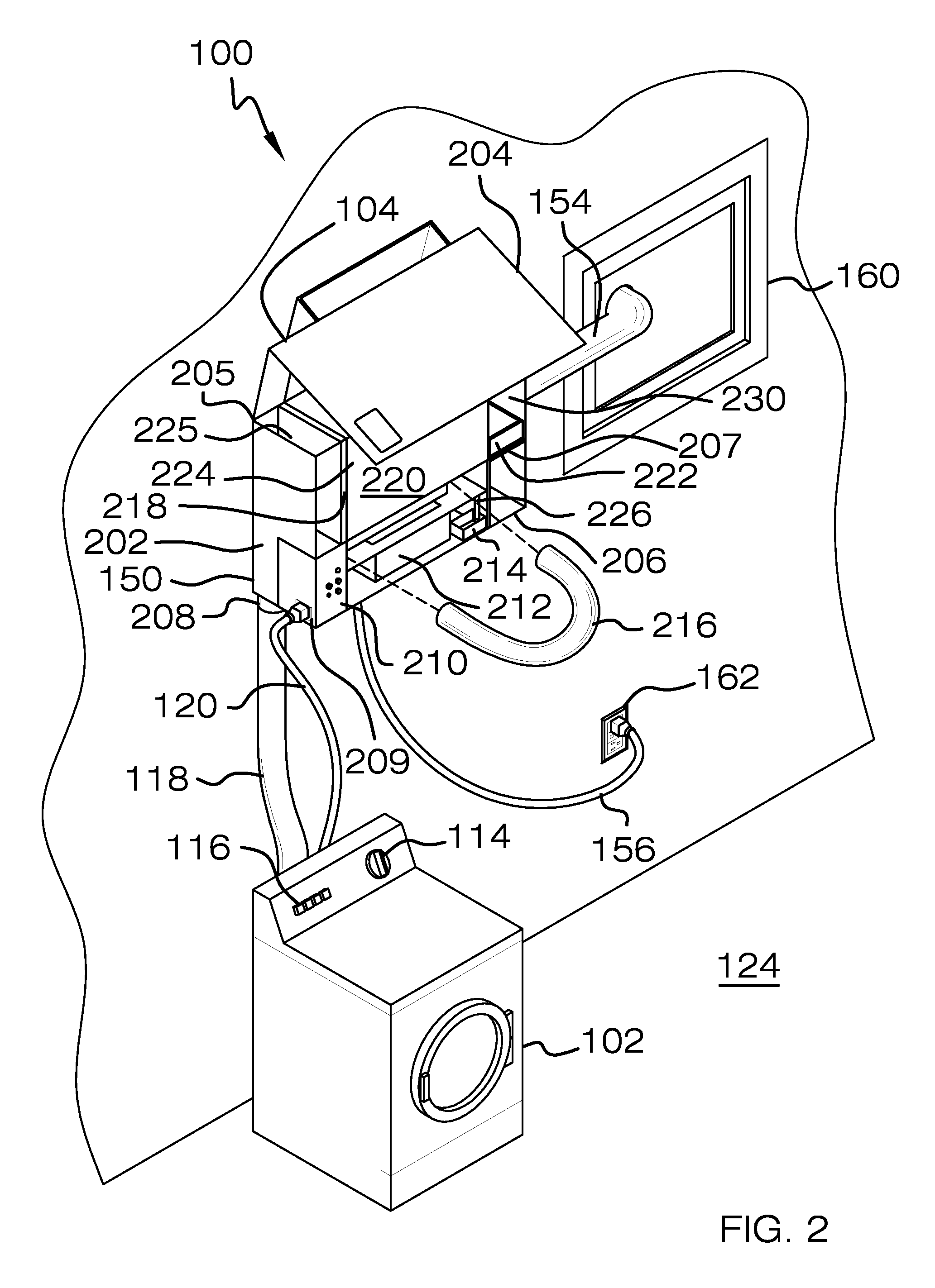Heat recovery system for clothes dryer
a technology for recovering systems and clothes dryers, applied in other washing machines, laundry driers, textiles and paper, etc., can solve the problems of excess moisture condense on cold surfaces, not healthy, and not good idea,
- Summary
- Abstract
- Description
- Claims
- Application Information
AI Technical Summary
Benefits of technology
Problems solved by technology
Method used
Image
Examples
Embodiment Construction
[0019]FIG. 1 is an isometric view of a heat recovery system for a clothes dryer (heat recovery system 100). Heat recovery system 100 may include a clothes dryer 102 and a recovery unit 104. Recovery unit 104 may recycle heat by recovering heat passed from clothes dryer 102. The recycled heat subsequently may be utilized in heating a home 108.
[0020]In describing heat recovery system 100, it may help to first have a basic understanding of how a typical clothes dryer operates. With a basic understanding of how a typical clothes dryer operates, it may be clearer to see how the recovery unit 104 interacts with clothes dryer 102.
[0021]Clothes dryer 102 may utilize hot air to dry clothes. The basic components of clothes dryer 102 may include a frame 110 supporting a door 112, a cycle control knob 114, heat setting buttons 116, a dryer vent hose 118, and a dryer power cord 120. Frame 110 may have material removed to form a large hole 122 in a front portion of clothes dryer 102. Hole 122 may...
PUM
 Login to View More
Login to View More Abstract
Description
Claims
Application Information
 Login to View More
Login to View More - Generate Ideas
- Intellectual Property
- Life Sciences
- Materials
- Tech Scout
- Unparalleled Data Quality
- Higher Quality Content
- 60% Fewer Hallucinations
Browse by: Latest US Patents, China's latest patents, Technical Efficacy Thesaurus, Application Domain, Technology Topic, Popular Technical Reports.
© 2025 PatSnap. All rights reserved.Legal|Privacy policy|Modern Slavery Act Transparency Statement|Sitemap|About US| Contact US: help@patsnap.com



